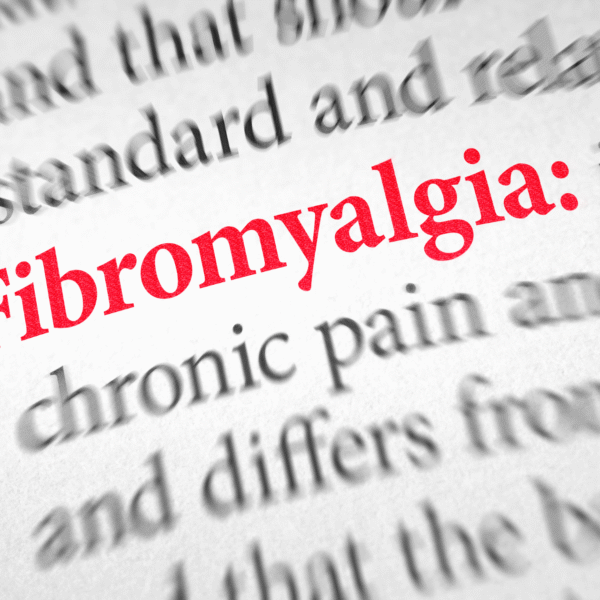
What Makes Fibromyalgia Different from Other Pain Conditions?
Chronic pain affects millions of people worldwide, but not all pain conditions are the same. Fibromyalgia is one that stands apart—often misunderstood, frequently misdiagnosed, and uniquely complex. Understanding what makes fibromyalgia different from other pain conditions can help patients and providers find better ways to manage symptoms and improve quality of life.
A Condition Defined by Widespread Pain
Unlike conditions that target specific joints, muscles, or nerves, fibromyalgia is characterized by widespread musculoskeletal pain that affects both sides of the body and extends above and below the waist. This pain is often described as a constant, dull ache that persists for at least three months.
The key difference lies in how the body processes pain. Fibromyalgia doesn’t stem from inflammation, injury, or tissue damage—it’s a disorder of pain perception. People with fibromyalgia have an increased sensitivity to pain signals, a phenomenon called central sensitization, which causes even mild stimuli to feel painful.
Beyond Pain: The Full Symptom Picture
While chronic pain is the hallmark symptom, fibromyalgia is much more than that. It’s a multi-system condition that affects energy levels, mood, and cognitive function. Common symptoms include:
- Fatigue and sleep disturbances: Many patients report waking up tired, even after sleeping for long hours. Restorative sleep is often disrupted by pain or other sleep disorders.
- Cognitive difficulties (“fibro fog”): Problems with memory, focus, and concentration are common.
- Headaches and migraines: Many people with fibromyalgia also experience chronic headaches.
- Digestive issues: Conditions like irritable bowel syndrome (IBS) frequently overlap with fibromyalgia.
- Mood disorders: Anxiety and depression often coexist with fibromyalgia, likely due to shared neurological pathways.
This broad range of symptoms distinguishes fibromyalgia from more localized pain conditions, such as arthritis or neuropathy, which typically involve a single system or structure.
What Causes Fibromyalgia?
The exact cause of fibromyalgia isn’t fully understood, but research points to a combination of factors including:
- Genetics: A family history of fibromyalgia or other pain disorders may increase risk.
- Trauma or stress: Physical injuries, infections, or emotional stress can trigger the onset of symptoms.
- Abnormal pain processing: Functional MRI studies show altered activity in the brain regions that process pain, suggesting the central nervous system plays a key role.
This complexity makes fibromyalgia unique—not caused by damage you can see on an MRI or X-ray, but by how the brain and spinal cord interpret pain.
How Fibromyalgia Differs from Other Pain Conditions
| Feature | Fibromyalgia | Arthritis | Neuropathy | Myofascial Pain Syndrome |
| Pain location | Widespread (both sides, above and below waist) | Localized to joints | Follows nerve pathways | Localized muscle areas (trigger points) |
| Cause | Central sensitization (abnormal pain processing) | Inflammation or joint degeneration | Nerve damage | Muscle overuse or injury |
| Visible damage | None (normal imaging) | Joint damage visible on X-ray | Nerve abnormalities | Muscle tightness or knots |
| Associated symptoms | Fatigue, fibro fog, sleep issues, IBS | Stiffness, swelling | Numbness, tingling | Localized tenderness |
| Treatment focus | Nervous system regulation, exercise, stress management | Reducing inflammation | Nerve repair and pain relief | Trigger point release |
This comparison highlights that fibromyalgia is a “whole-body” condition, rather than one isolated to a single structure or system.
Diagnosis: A Process of Elimination
Because there’s no single test for fibromyalgia, diagnosis often involves ruling out other causes of chronic pain. Physicians use a combination of patient history, symptom mapping, and criteria established by the American College of Rheumatology—such as widespread pain lasting more than three months and the presence of specific tender points or symptom severity scores.
The lack of clear biomarkers can make the process frustrating for patients, but understanding the nature of fibromyalgia helps ensure appropriate treatment and support.
Treatment and Management Options
There’s no cure for fibromyalgia, but a combination of therapies can help manage symptoms and improve daily functioning. Treatment often includes:
- Medications: Such as duloxetine, pregabalin, or low-dose antidepressants that affect pain pathways.
- Physical therapy and gentle exercise: Activities like yoga, swimming, and stretching improve mobility and reduce stiffness.
- Sleep management: Addressing sleep disorders and improving sleep hygiene can reduce fatigue and pain sensitivity.
- Stress reduction: Cognitive behavioral therapy (CBT), meditation, or biofeedback can help regulate the body’s stress response.
- Lifestyle changes: Balanced nutrition, pacing activities, and avoiding overexertion can make a big difference.
Living Well with Fibromyalgia
Living with fibromyalgia means finding balance—listening to your body, managing stress, and building a care plan that includes both medical and lifestyle approaches. While it can be a challenging condition, many people find meaningful relief through consistent management and support.
By understanding what makes fibromyalgia different from other pain conditions, patients and providers can move beyond frustration and toward personalized, effective care.



